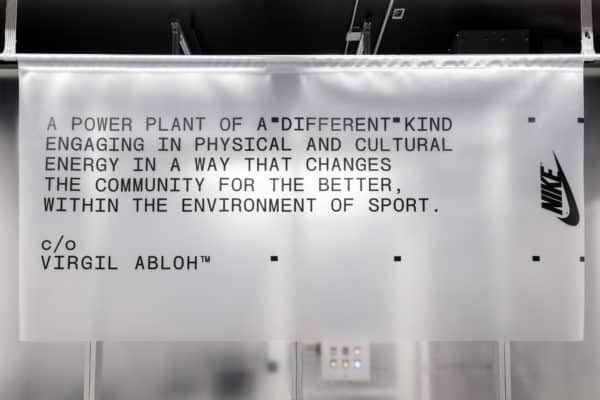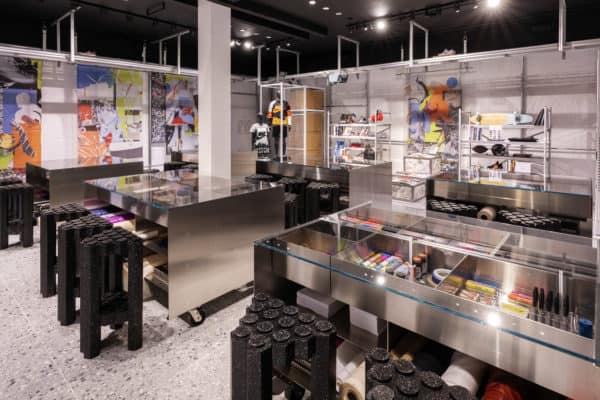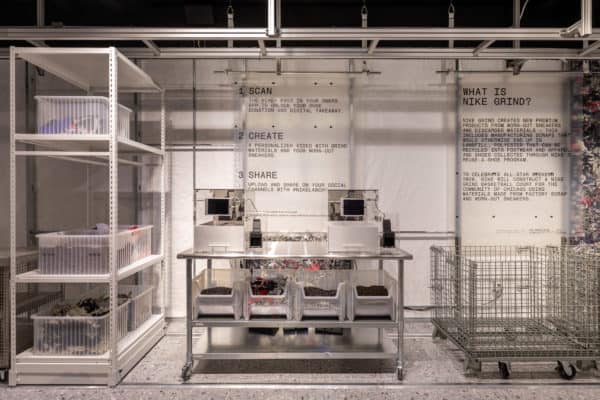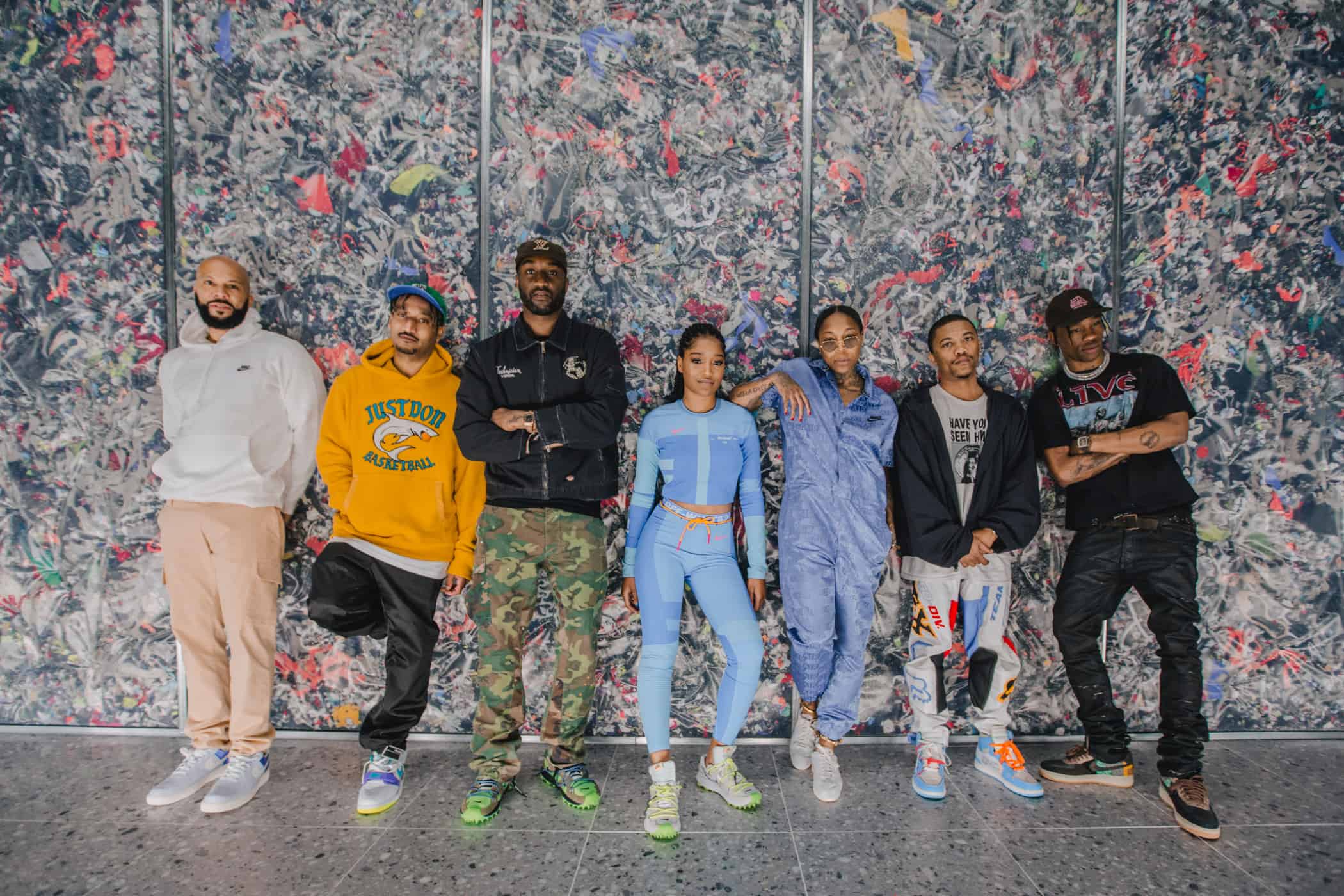[ad_1]
Virgil Abloh worked with Nike to create NikeLab Chicago Re-Creation Center ℅ Virgil Abloh, a modernized version of an old town rec center on Michigan Ave (also known as The Magnificent Mile), that will be used to empower the youth to add to the cultural cache of the Midwestern city.

The Re-Creation Center intends to spark creativity through workshops, giveback programs, exclusive product and influential local forces. “The outside world is changing with pillars of innovation, equality and sustainability. How can we in this collaborative space actually nudge that forward into the contemporary culture?” Abloh, a 2018 EBONY Power 100 honoree, said about the concept of the space. He explained that it should be as functional as an Apple store. “As cities evolve, I think it’s amazing that brands as strong as Nike can give back in that way. This is square footage on Michigan Ave that you can borrow a notepad and draw a sneaker and there doesn’t have to be an exchange.”

The historic avenue is now a premier commercial district that features luxury spots and architectural landmarks including the Water Tower and neo-Gothic Tribune Tower. But Abloh is taking The Magnificent Mile back to its beginnings as a destination for starving artists to get their start. The juxtaposition of the variety of history in the city is what influenced Abloh to become a polymath of architecture, music, fashion and design, which are all found at the heart of the re-creation space.
The space was designed using elements of NIKE Grind, recycled shoes and discarded materials that would otherwise end up in a landfill. It features a large conveyor belt for Nike’s Reuse-a-Shoe initiative, which will take donations of old sneakers to make grind or to be given back to those in need. Abloh and the Nike team will use the grind to design a basketball court for the community during the NBA’s All-Star Weekend 2020.

In addition, there is a mentorship program for 10 hand-selected young creators who align with Abloh’s wide-array of artistic sensibilities. The mentors are Chicago-based creators including Chuck Anderson (graphic design), Paul Ocatvious (photography), Alyx Harch (fabric design), Thomas Kelley and Carrie Norman (brand identity) and Ann Lui and Craig Reschke (architecture).
EBONY was on hand during the opening of the Re-Creation Center on Thursday and spoke with Abloh about the space and how his work with Nike adds to Chicago’s rich Black history.
I went on the Virgil tour yesterday, and much of the conversation was about the architecture in Chicago. As you know, EBONY also started here and so did other Black moments [such as the Great Migration]. It is the birthplace of prominent African-American entrepreneurs and creatives including Johnson H. Johnson, Common and you’re one of the latest ones. How do you want to continue that legacy of leading Black voices that come from the Windy City?
Well imagine, I was a kid that came up [Michael Jordan] was the role model that spoke to me the most. He was sort of Superman because of his athletic prowess. Then watching him transition to evolve in his own brand adjacent to Nike, and be a businessman is what gave me the drive for it. Also, Common and Kanye, both being contemporary artists that I can relate to were a driving force.

As you can see, my relationship with Nike is multifaceted. It’s not just me as a designer. They’re allowing me the platform to come back to Chicago in a meaningful way to make a place that’s a modern rec center next to a brand. Anyone who grew up in the ‘90s knows the unfortunate side that a pair of Nikes could have on a teenager’s walk to school.
[Nike didn’t] just say, “Hey, make cool sneakers that we can sell.] They’re giving me a platform, giving me square footage in the [Chi] that has its inherent characteristics, i.e., a lot of the unfortunate circumstance for minorities in the city to do something in a political way. It shows the integrity of a brand like Nike but also shows the conversations that we have.

Looking at the students selected for the workshop, were you adamant in making sure that you were inclusive to a variety of young adults who may not have had the access otherwise?
One hundred percent. In one way it’s now in the cultural climate to operate with a set of ethics and standards, which I think show’s great growth and development as a conscious. Nike has adopted that, and I have adopted that. But also there’s a sort of responsibility to tell and expand the voice and platform to where we come from.
I’m a person, my parents are from Ghana in West Africa. My dad came to Chicago to make a better life to have a kid like me, and we ended up in Rockford, Illinois. Along my period in life. I’ve met great people from all walks of life. So why not make an institution or program or anything I do, reflective of my own personal experiences, but also trying to expand the world so not to carry issues of the past. It’s not just what you see when you saw people. It’s much more ingrained than that in every walk of life.
Much of the EBONY audience, who are predominately women, know you for the Nike x OFF-WHITE designs you have done for Serena Williams. The clothing choices turn the long history of the sexualizing and objectification of the Black female body on its head. From the delicate tutu she wore to last year’s U.S. Open to her most recent French Open two-piece, which was emblazoned with the words “Mother,” “Goddess,” “Queen,” and “Champion” in both English and French. Just one year after her controversial banned catsuit. As a Black man, what is the importance in those political statements for you?
I think what’s important is her, herself. We as a community know it’s about representing both of us, no matter what skin color. It’s about representing the layers that often aren’t told in pop culture. Serena is a mother first and foremost. She’s a strongwilled individual [and] creative. She’s light on her feet and loves to dance. She’s a designer herself and me. I’m not just into fashion just to make fashion – it’s kind of too flat for me. It’s more about using [the clothes] to tell stories. And so, Serena is the ultimate inspiration. I feel like when I’m designing for her, I feel like I’m designing for one of a million important superwomen. The outfit is like a cape, but it’s also beautiful, it’s feminine, it’s strong. It has a message literally and figuratively. It can reveal her body. It moves when she moves to make a dramatic shape. That’s why I love fashion, and that’s what interests me in that space.
As diversity and the world evolves, do you think your work and what you do with Nike can push Pan-African culture without seeming opportunistic?
It’s funny you asked that. In context, it can’t be overlooked how much of a departure from the norm it is that I’m a Black, [first-generation] African, from Chicago, who is 38-years-old. I’m a young person among the statistics of how difficult it is to [defy those categories,] and be at the design and shaping level of work. Of course, there needs to be more, but often into being a role not just for young kids but also the corporation to give people a chance who aren’t only the status quo designers. When the next kid goes to the office and says, “I want to be a designer,” that they look at the work that we did and respond, “Hey, we should give him a shot because I know that Virgil project had a great sell-through and cultural resonance.” A lot of it is leading by example and doing a quality job that shows that you can’t typecast certain individuals. I think that is not to be overlooked as much as I can do it. Then obviously when you look under the hood, the programs that we’re doing is second nature because I’m a minority, in a [niche] setting. I look to make design more as multifaceted as my group of friends or where I came from, where I hang out, where I used to get my haircut. It was a different place and I want that to be in my work environment as well.
The NikeLab Chicago Re-Creation Center c/o Virgil Abloh opens from May 31 to July 28 at 673 N. Michigan Avenue.
[ad_2]
Source link

